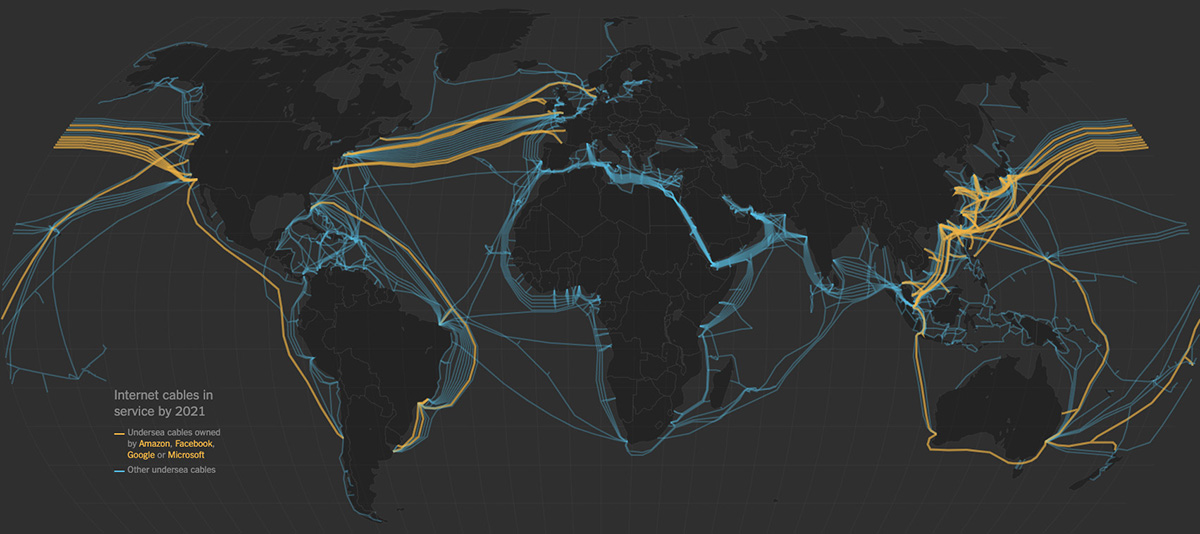
Ubertas Consulting – AWS Partner, helps Wiply to improve security standards
August 23, 2022
NSFW or SFW? The Freedom to choose
November 26, 2022A submarine cable is a fibre optic cable laid in the ocean, connecting two or more landing points.
According to TeleGeography, there are 426 active submarine cables in the world. Rarely much wider than a garden hose, today’s cables generally consist of the optical fibres that carry the information, which are then coated with silicon gel, then sheathed in several layers of plastic, steel wire, copper and nylon to provide insulation to protect the signal and protect the cable from damage caused by fauna, weather and other natural events, fishing and anchors.
The cables are found on the ocean floor and are thought to extend approximately over 807,000 miles.
Some are very short and connect islands by a few miles, such as the one that runs between Ireland and the UK.
Others, like one of the cables connecting Asia to the United States, are more than 10,000 miles long.
Cables break and have to be repaired, and new ones are always being laid. Contrary to popular myth, sharks are not prone to gnawing on cables.
Work to demonstrate the potential of submarine cables began in the 1840s, when Samuel Morse, the inventor of the Morse Code, plunged a wire insulated with tarred hemp and Indian rubber into the waters of New York harbour and telegraphed using it in 1842.
The first commercial cable was laid 10 years later in 1850, when the English Channel Submarine Telegraph Company laid a telegraph cable between England and France.
The Submarine Telegraph Company laid a second cable the following year and then followed other cables connecting England with continental Europe.
In 1854 and completed in 1858, the Atlantic Telegraph Company laid the transatlantic telegraph cable, which ran from Valentia, in western Ireland, to Bay of Bulls, Trinity Bay, Newfoundland, and was the first to cross the Atlantic.
It only ran for three weeks before breaking down irretrievably.
Some useful references:
https://www.submarinecablemap.com/





